We’ve been quiet on the blog front for a while, but a lot has been happening on the personal front. The biggest change for me has been with work: as of September, I am no longer spending half my life in Asia — and my carbon footprint has shot down to human proportions.
Meanwhile, thanks in part to our ratty neighbours and compost challenges, Bonnie Lee has gone on a quest to create a local composting solution for multifamily dwellings, which has led to two things: she is working with LA Compost to bring a solution to Palms, and has become a member of the Palms Neighborhood Council Green Committee.
We’re also both members of the Technology Innovation Council which the USDA asked the folks at Food Cowboy to set up.
With all that going on, maybe we can be excused for having allowed two lemons to start looking a little dry — two lemons for which we had no immediate plans. We also had a big, sweet navel orange sitting around, so decided to try our hand at marmalade.
Orange and lemon marmalade (about 3 cups)
Ingredients
- 3 small lemons (two of which were looking a bit, but not overly, dry)
- 1 large Valencia orange
- 3 cups water
- 2.5 cups sugar
Directions (in pictures)

1. Cut each piece of fruit into 8 wedges. Remove the seeds and drop wedges in a pot. (Tip: hold each wedge up to the light to make sure you got all the seeds.)

2. Cover with water, and boil for five minutes.
3. Turn off heat, and let sit covered overnight (for at least 12 hours)
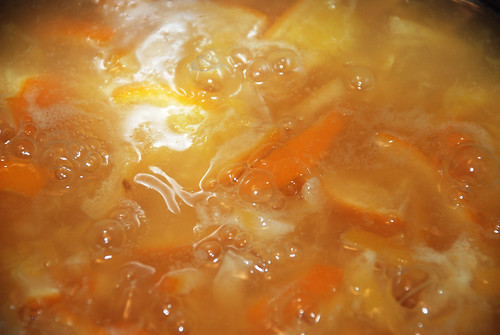
4. Remove wedges from liquid (and leave the liquid in the pot — you will need it).
5. Cut each wedge crosswise into thin slices, and return to the pot.
6. Boil for one hour.
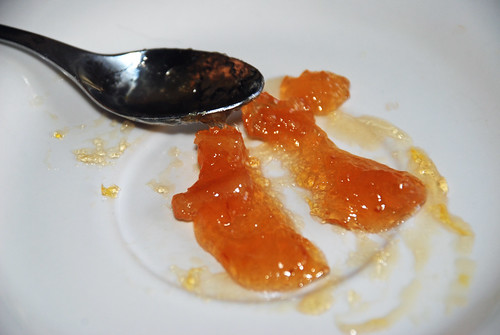
7. Add sugar to boiled fruit mixture. Basically, you should be adding the same volume of sugar as you have fruit mixture, but we used a little less. We had 3 cups of mixture at this point, and used 2.5 cups sugar.
8. Continue to boil, occasionally spooning some of the mixture onto a plate, letting it cool to room temperature, and running a spoon through it. When you get something with the consistency shown in the picture above, you’re done.

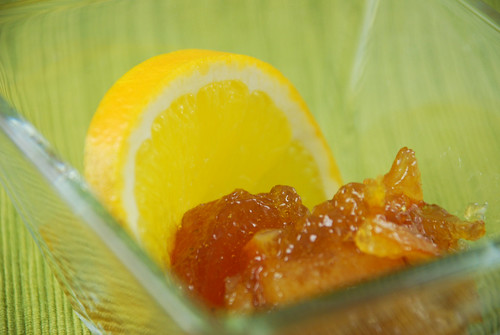
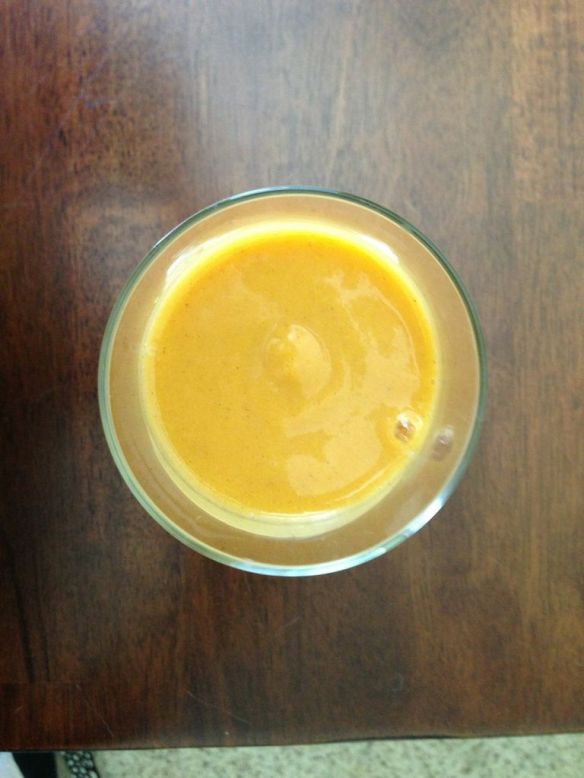
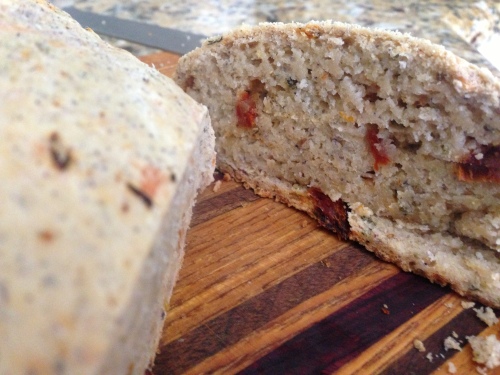





 There are few things I like more than a good Indian meal, and one of my favorite curries is saag. When you get it in North America, it’s usually made with spinach, but it can be made with any green or mix of greens – and it’s a great way to use edible greens that typically end up in the bin, like those of sweet potatoes, radishes, carrots, beets and broccoli.
There are few things I like more than a good Indian meal, and one of my favorite curries is saag. When you get it in North America, it’s usually made with spinach, but it can be made with any green or mix of greens – and it’s a great way to use edible greens that typically end up in the bin, like those of sweet potatoes, radishes, carrots, beets and broccoli.



